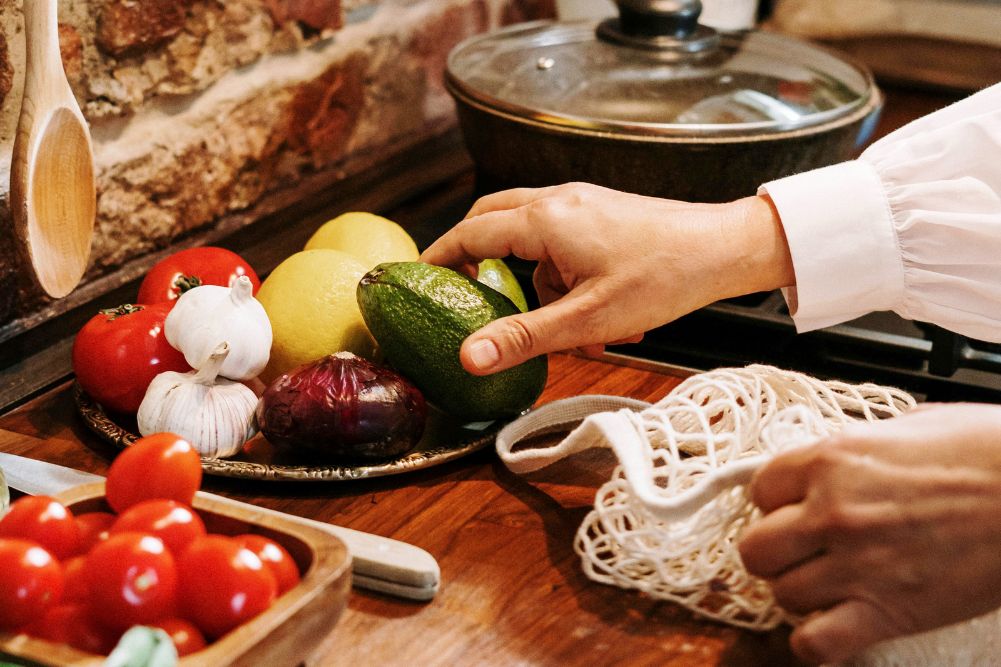The facts on food
While the average food purchase decision takes 2.5 seconds to make, hardly long enough to take a scrutinising approach, we would all cause a stink if food packaging became blank. In addition to providing information to individual shoppers, food labelling can be used as a tool for achieving beneficial health outcomes, such as reducing obesity.
Australia and New Zealand generally share the same regulatory system, laid down in the Food Standards Code administered by Food Standards Australia New Zealand (FSANZ). Policies are set by the Forum on Food Regulation (FoFR), a body largely consisting of health and food ministers.
Two more players are Choice (Australia) and Consumer (NZ), both of which provide a mix of advocacy and advice regarding consumer matters. In recent years, they have been outspoken about the need for more consumer-friendly food labelling. This opportunity arrived in 2009 with the Blewett Review into food labelling. In 2011, this yielded the Labelling Logic report containing 61 proposed changes, some of which the FoFR has accepted while knocking back others.
In Australia, the system for making food labelling complaints is a bit confusing and piecemeal. While country of origin labelling is the territory of the Australian Consumer & Competition Commission (ACCC), other labelling issues should be raised with one’s state food authority. In NZ, all complaints are directed to the New Zealand Food Safety Authority.
Health at a glance
Currently, the healthiness of a processed food can be judged from the daily intake percentage tables on the packaging. Frequently in a small font, these tables are also user-unfriendly because they require calculation on the part of the consumer. As the typical serving sizes given are unregulated in Australia and NZ, there is nothing to prevent them from being on the small side. Daily intake tables also tend to convey the misleading impression that a certain amount of sugar and salt in the diet is healthy, when both are best minimised.
Labelling Logic Recommendation 50 aims to give this a needed overhaul, with a move to a mandatory front-of-pack labelling system. The FoFR endorsed this decision in June 2013 but, at the time of writing, the business-friendly Abbott Government in Australia appears to wavering on a front-of-pack labelling commitment.
Consumer groups, health authorities and consumers prefer the “traffic light” system that’s currently used in the UK. This is the easiest to read at a glance, with a red colour warning that a product is high in sugar or fat. In response to resistance to the “traffic light” by the Australian Food and Grocery Council (AFGC), the FoFR’s preferred front-of-pack label involves a health star system where a product is rated between 0.5 and 5 stars. Below the stars would be indicators rating the saturated fat, sodium, sugar and fibre content.
Meanwhile, NZ has been conducting its own consumer-oriented research, looking at both traffic-light and health-star labelling. It would prefer its system to be consistent with Australia’s.
Country of origin
In Australia, country-of-origin labelling is required for nearly all foods, with the exception of some less common meats. New Zealand lacks compulsory labelling, except for wine, but voluntary labels are common in supermarkets.
Where packaging states “Product of …”, this applies to all the significant ingredients and indicates that almost all the processing was carried out in the relevant country. “Made in …” indicates that at least 50 per cent of total production costs (including processing and packaging) were incurred there.
Processed foods sometimes contain the unhelpful language “Made in … from imported and local ingredients”. According to ACCC guidelines, the word that comes first — “imported” or “local” — should indicate where the majority of ingredients were sourced, bearing in mind that the packaging is bizarrely treated as an ingredient.
In NZ, a number of anecdotal reports suggest that an unregulated environment may be encouraging a pattern where some voluntary labelling is inconsistent or incorrect.
Country-of-origin labelling is supported by the group CoOL NZ, a coalition of consumer groups, agriculture bodies, unions, food companies and the Green Party. It wants to see laws that at least match those in Australia, and has an online facility for concerned people to lobby their MPs.
Look out for the following Australian and NZ logos:
- The green-and-gold kangaroo Australian-grown mark
- The red-and-blue NZ-grown kiwi symbol
- Yellow-and-green AUSBUY stickers, indicating either “Australian Owned” or “Australian Owned and Made”
Tiny wording
Food rules require all ingredients to be included and listed in order of percentage content, by weight. In Australia and NZ this wording has to be “legible”, which in practical terms means nearly all font sizes are OK. There is, however, a requirement to provide a distinct contrast between the text and its background. For most food buyers with imperfect eyesight, reading the label can require carrying a pair of glasses and a magnifying glass.
For allergy and warning messages, the story is different: the Code requires a minimum font size of 3mm, or 1.5mm in the case of small items. It is obvious that, unlike ingredient lists, they are intended to be read.
Palm oil: why can’t it be labelled?
Palm oil has a particularly bad reputation because the establishment of many palm oil plantations in Malaysia and Indonesia has destroyed virgin rainforest, threatening the future of the orangutan and Sumatran tiger.
Despite strong grassroots support for labelling palm oil, there is currently no obligation in Australia and NZ to specify where it is being used, and it is usually disguised under the unhelpful generic term “vegetable oil”. People keen to avoid palm oil can assume that all “vegetable oil” refers to palm unless they know otherwise. Another likely indication of palm oil is a saturated fat content that is at least 40 per cent of the overall fat on the daily intake percentage table.
Fortunately, there are signs of positive change. Recommendation 12 of Labelling Logic involves a requirement to specify all sugars, fats and oils in a bracketed list, and this is currently being investigated by FSANZ.
Hydrogenation, a process whereby oils are artificially hardened and which can be associated with trans-fat content, does not have to be indicated on the label.
“Use by” & “best before”
Often confused, these two messages have very different meanings. “Use by” is a food safety message commonly used for products such as dairy and meat, and should be adhered to.
“Best before” indicates that, while a food can be safely consumed after this date, the quality and nutritional value may have diminished.
Avoiding free-range confusion
In Australia, free-range-labelled eggs are causing consumers a lot of unnecessary confusion due to a lack of regulation and enforceable standards. The growing number of voices in Australia calling for a national standard now includes Choice, the Greens and the New South Wales Office of Fair Trading.
With free-range representing nearly 40 per cent of the Australian egg market, most purchasers are looking for good animal welfare outcomes and have a wide range of options:
- Maximum 750 birds per hectare. FREPA accreditation
- Maximum 1000. Australian Organic Standard
- Maximum 1500. Humane Choice accreditation
- Maximum 1500–2500. RSPCA accreditation
- Around 10,000. Coles (Australia) own-brand
- Maximum 10,000. A controversial 2013 Queensland state regulation
- Around 20,000. The highest free-range stocking density
A call by the Australian Egg Corporation to establish 20,000 birds per hectare as the national standard was rejected by the ACCC in 2012.
Sometimes, baffled consumers are presented with a stocking density of birds per square metre. This can be multiplied by 10,000 to obtain a birds-per-hectare figure.
In NZ, a maximum stocking density guideline has fortunately been introduced. The options include:
- Maximum 865 birds per hectare. Certified Free Range Eggs accreditation
- Maximum 865. SPCA accreditation
- Maximum 900. Code of Welfare “best practice” stocking density
- Maximum 1500. AsureQuality organic certification
- Maximum 2000. BioGro organic certification
- Maximum 2500. Code of Welfare stocking density
When buying free-range meat, again third-party accreditation is preferable, with options including RSPCA, FREPA and Humane Choice (Australia), and SPCA and FREPNZ across the Tasman.
Grass-fed beef may not be what you are expecting if it has been finished inside a feedlot. Look for labelling or confirmation that it is also grass-finished.
Going organic
For organic consumers, the rules in Australia and NZ are very similar. Products can be certified if the organic content is 95–100 per cent of the total, and this guarantees that the whole product will be free from GM, irradiation, nanofoods and synthetic ingredients. Foods below 95 per cent can be described as organic, but lack certification and therefore may contain ingredients that certified products would prohibit.
In short, look for certification when buying organic or biodynamic. This most commonly involves the ACO spiral seed symbol in Australia and, in NZ, the blue-and-green AsureQuality logo or BioGro plant.
Patchy GM labelling
While Australia and NZ have a GM labelling system, it is restricted by a number of exemptions, including:
- Unintentional contamination at a level below 1 per cent of the total food content. Whether or not low levels of GM content are unintentional is very hard to prove.
- Refined ingredients such as oils, fats, sugars and starches.
- Flavours, where the GM content is less than 0.1 per cent of the total food content.
- Where animals have been fed GM feed.
- Restaurant or airline food.
To avoid buying GM food in Australia, the best resource is the Greenpeace True Food Guide. The most recent version of this is available as a 2011 Kids Edition. New Zealand is planning a 2014 edition of its GE-Free Food Guide.
Irradiation labelling under threat
At present, irradiated food must be labelled in Australia and NZ, with one option being the international Radura flower-like symbol on the packaging or adjacent to irradiated produce. Foods can state “irradiated”, “treated with ionising radiation” or “treated with ionising electrons”, and these messages can occur in the ingredients list. Restaurants, takeaways and bakeries are also required to indicate irradiated ingredients.
Unfortunately, mandatory labelling of irradiated food is under threat. Labelling Logic Recommendation 34, which was endorsed by the FoFR, involves a review of mandatory irradiated food labelling in Australia and NZ, which is expected to run from late 2014 to late 2015, before being referred to the FoFR. A petition calling for the continuation of existing irradiated food labelling is in the resources section below.
A useful resource is the Irradiation Free Food Guide on the Food Irradiation Watch website (foodirradiationwatch.org).
Nanofood = no labelling
There is no requirement for labelling of nanofoods in Australia and NZ. The same is currently true everywhere, although the EU is scheduled to commence labelling nanofoods at the end of 2014. The Australia and NZ regulatory standard specific to nanofoods that was “urgently” needed in Labelling Logic was soft-pedalled in the FoFR’s response.
Under these circumstances, anybody wishing to avoid nanofoods and foods with nanoparticles in their packaging can either ask questions of each company individually or buy certified organic.
Food labelling in a “free market”
Both Australia and NZ are considered among the lowest-regulation countries with regard to food labelling, and NZ is remarkable for being the least regulated country in the OECD. Slashing red tape can sometimes seem like a good idea, but there are downsides. Both Choice and Consumer would like to see the terms “organic” and “free range” defined in the Food Standards Code in place of industry self-regulation.
Twelve countries in the Asia-Pacific region, including Australia and NZ, are currently negotiating the Trans-Pacific Partnership Agreement. This trade liberalisation agreement, if signed, could jeopardise the introduction of front-of-pack health ratings on food products and also threaten existing labelling requirements for GM and irradiated food. Opposition to this treaty continues to grow.
Resources
- Food Standards Australia New Zealand (FSANZ), www.foodstandards.gov.au
- Food Labelling Review, foodlabellingreview.gov.au
- FoFR response to Labelling Logic recommendations, bit.ly/1b1bRXh
- Choice (Australia), choice.com.au
- Consumer (New Zealand), consumer.org.nz
- CoOL NZ (Country of Origin Labelling NZ), cool.org.nz
- Australian Competition and Consumer Commission (ACCC), accc.gov.au
- New Zealand Food Safety Authority (NZFSA), foodsafety.govt.nz
- True Food Guide, truefood.org.au/truefoodguide
- Food Irradiation Watch, foodirradiationwatch.org
- Irradiation labelling petition, chn.ge/1f5wMnf
Martin Oliver is a writer and researcher based in Lismore, northern NSW, Australia







